Railroad Crews
on railroads, specifically the dispatchers and agents. Rex worked at the Springfield, Ohio dispatcher’s office which included dispatching trains along the old Cincinnati Northern route as well as the other Ohio routes. Prior to dispatching in Springfield, Rex worked at the NYCS agencies in Cement City, Greenville, Rossburg, and Rockford, all agencies along the Cincinnati Northern route. It’s been a while since I reviewed the people who worked the railroads, it’s time to do another photo study!
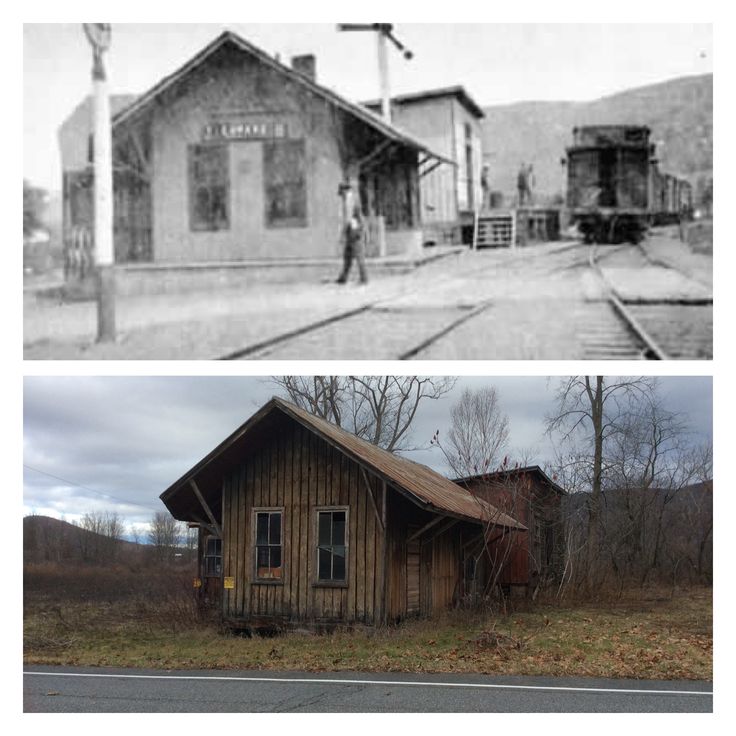
This is a “then & now” combination of photos of a station. I had trouble picking out a location for this station due to the low resolution of the early photo. The first pic of the station provides fuzzy images of several RR personnel. The order board appears to be set for a slow approach to collect orders on the right-side track. The stopped train appears to be next to the freight house where three individuals are standing on the dock appearing to be in discussion. I bet one of those three is the conductor. Just a wild guess – the guy in the foreground in front of the station might have just delivered the orders, and is strolling back to the office. (Pinterest photo)
I’ve shown this photo before. That’s G-W-L Co. #2 backing a small log train down a 15% grade! My first impression was that this was a switchback, but if so, they’ll need to climb a second grade of 7% with the load! I’m now guessing that it’s two connecting logging spurs and the train is backing the load down grade toward processing. Mentioning the crew, the Climax has the engineer and probably the fireman looking out the engineer’s side of the cab. There’s also a worker standing on the diverging track – kinda looks like a foreman. There’s also a three guys up the grade appearing to be checks on the load as it moves down the grade. Two of those “checks” appear to be standing on the loads of the first two cars! (I don’t think old lumber railroad practices would meet modern OSHA regulations!) I couldn’t find anything on the G-W-L Co., but the photo location is identified as Black Rock in Polk County, Oregon, 1890s. (Original photo is at the Salem Public Library, ORRD.1.6.)
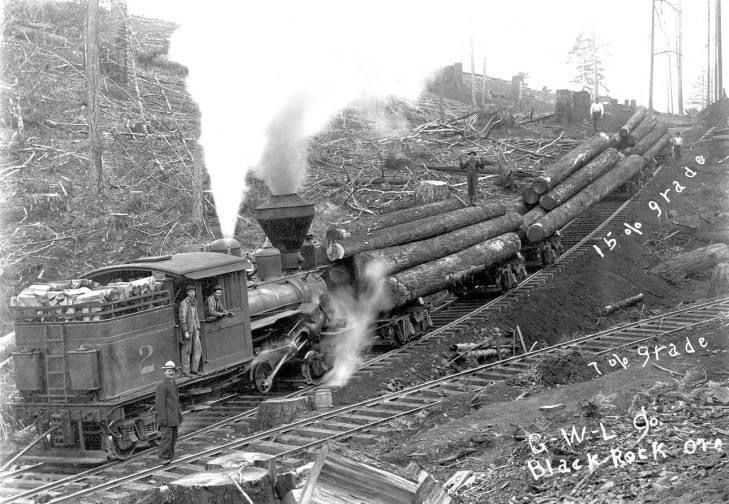
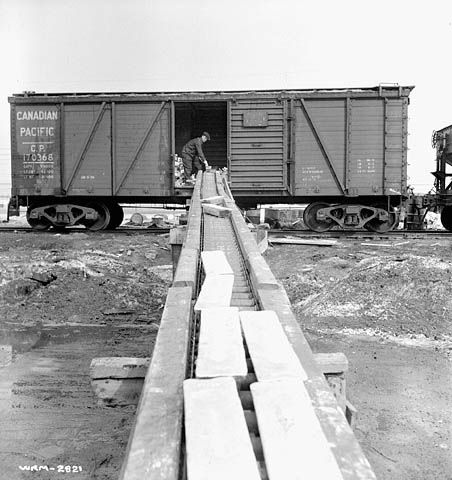
This guy is not necessarily a RR employee, but still working the CP by unloading lumber from an outside braced boxcar. One of the comments on this photo was that the car is an upgraded 36’ Fowler, identified by the car number. William Fowler was a Master Car Builder who worked for Class 1 railroads around the turn of the century. He moved to the Canadian Pacific around 1902 to become the CP’s Master Car Builder. He also served as the Master Car Builder’s Association Vice President. He was instrumental in designing the first single sheathed boxcars. This car, made by Dominion around 1908 has been modernized a bit between its original fabrication and the date of the pic, 1921. For more info on Fowler and the first single sheathe cars, check out this link: www.rpmconference.com/wp-content/uploads/2024/10/2024-Fowler_Boxcars.pdf
It was common in small remote yards to have a dedicated phone directly connected to the dispatcher’s office near one or both ends of the yard. This is likely the conductor checking in with the dispatcher on either progress or new orders. A second crewman stands off to the left – possibly a brakeman. It looks like the loco is an RS unit. (Pinterest)
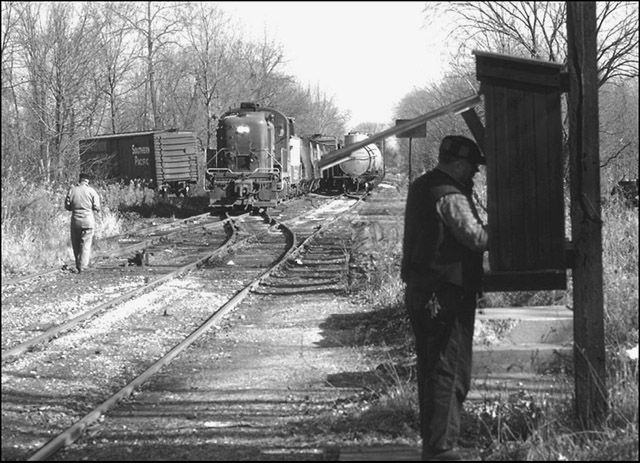
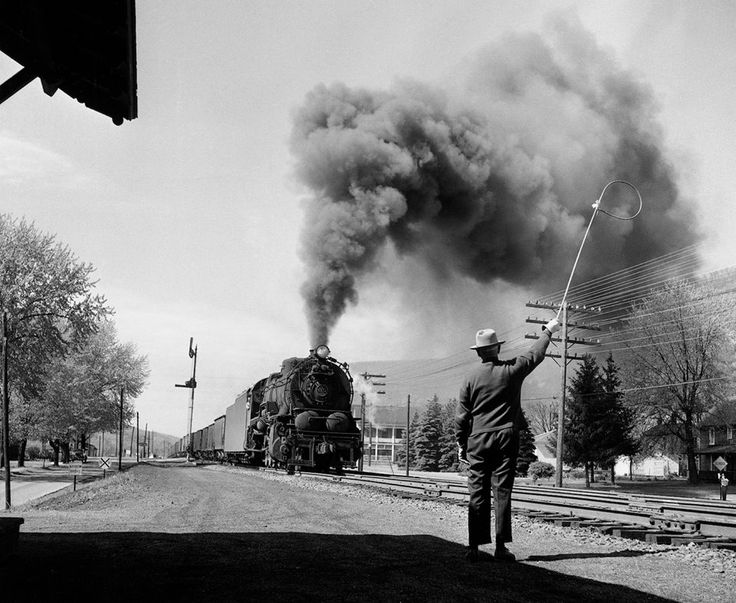
Speaking of orders – Here’s a station agent or employee hooping up orders to large PRR steamer. The engineer can be seen in the cab. This photo of a northbound coal train was taken in Trout Run, Pennsylvania (1956), by Jim Shaughnessy.
A station crew poses in front of the Missouri Pacific Railroad depot in Claflin, Kansas around the turn of the century. (Pinterest)
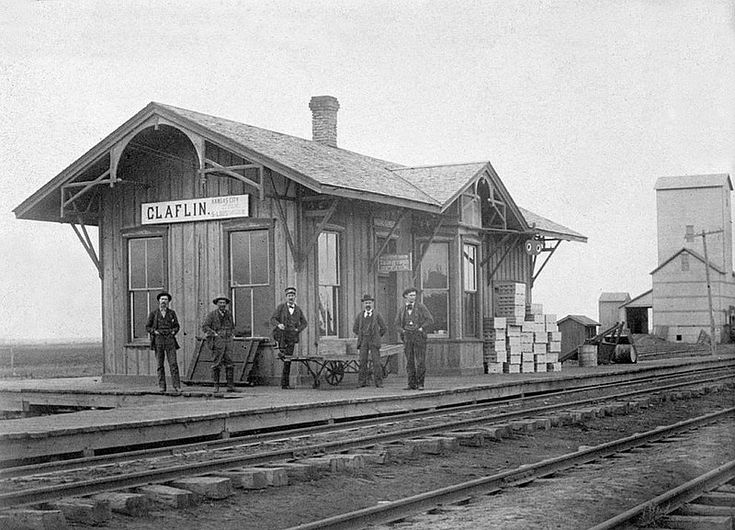
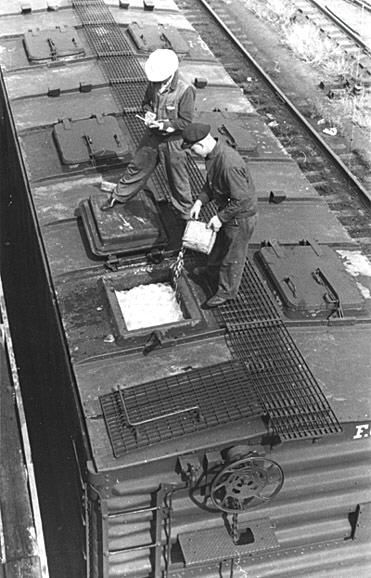
I’ve done several studies about the icing of reefers. The two icers are topping off an FGE (Fruit Growers Express) reefer with crushed ice. The icers were so skilled that they could put the correct mixture of ice and salt to maintain a temperature within 2 degrees of specified temperature by the shipper. Note the multiple hatches across the entire roof as opposed to the more common hatches at either end. We’re used to seeing the ice bunkers at the ends of the reefer. This reefer had its ice bunker in the top of the reefer above the load, hence hatches spread across the entire top. (Wikipedia photo)
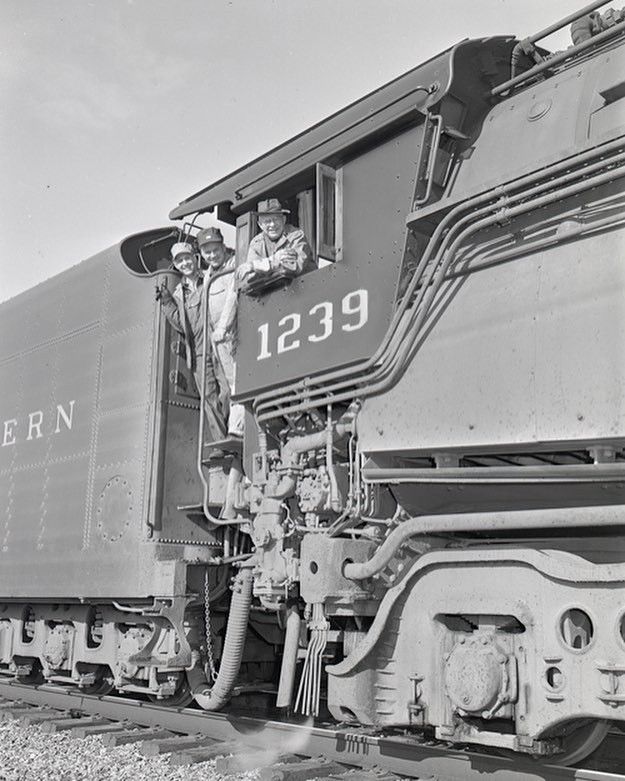
Great crew shot. The loco is likely a Northern, 4-8-4 (just guessing from the cab, trailing truck, and tender truck). (Pinterest)
I like this pic of two crew members working in the interior of the ATC (Automatic Train Control) cabinet on K4 #5480. The PRR K4s, Pacifics (2-6-4s), were their main passenger steamers of the early half of the 20th century. 425 K4s were built between 1914 and 1928. This earlier version of the ATC system was a safety feature that protected the train if it ran a restricted signal. The early ATC systems would apply the brakes for a complete stop rather than modern speed governor style ATCs that notch the speed down gradually. (Pinterest)
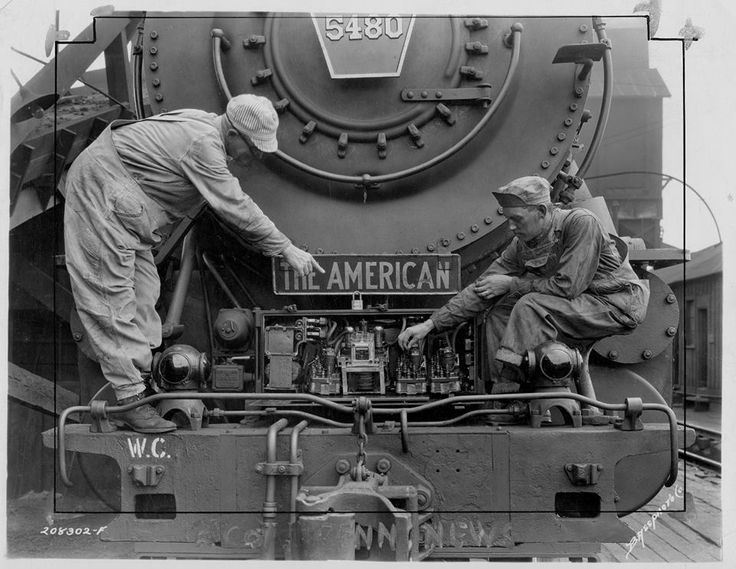
I believe this engineer is running an electric loco (catenary above), maybe a GG1 (shape of the front windshield and slope of the hood), down a PRR line (signal). Please correct me if I’m wrong. (Pintere
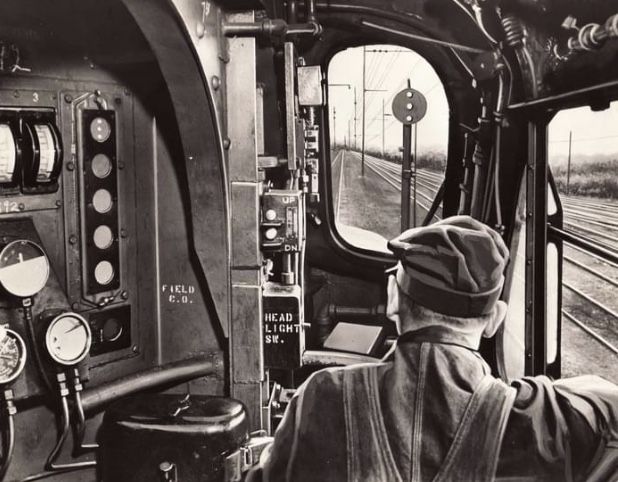
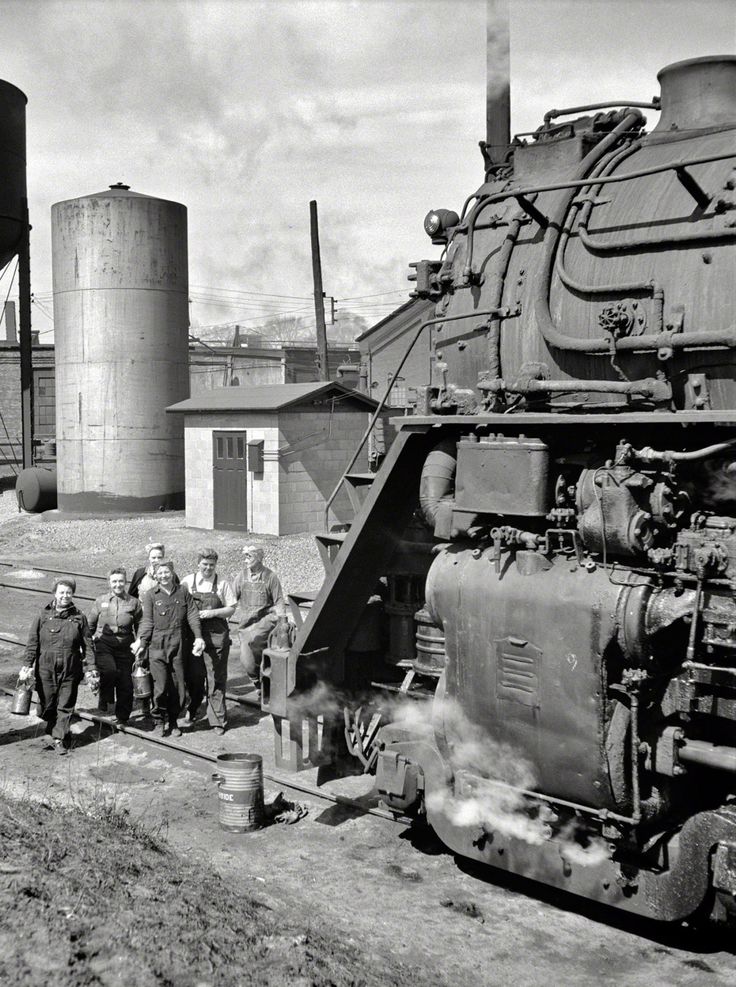
Here’s a group of women oilers and wipers of the Chicago & North Western Railroad going out to work on an engine Clinton, Iowa 1943. (Pinterest)
The engineer is obvious on this 0-12-0 Philadelphia & Reading camel. “Pennsylvania” is the name of the loco. I’m guessing that’s the fireman on the walkway behind the cab. There’s another guy standing on the other side of the tracks just in front of the loco. I’m also guessing this steamer is disconnected from it’s tender and that the fireman would normally be on the back platform behind the firebox and between the loco and tender. On first look, I noted that there does not appear to be counterweights on the drivers. Maybe there’s weights between the spokes at the top of the wheels (driving rods at the bottom in this position). It would be a rough ride at any reasonable speed without the counterweights! (Pinterest)
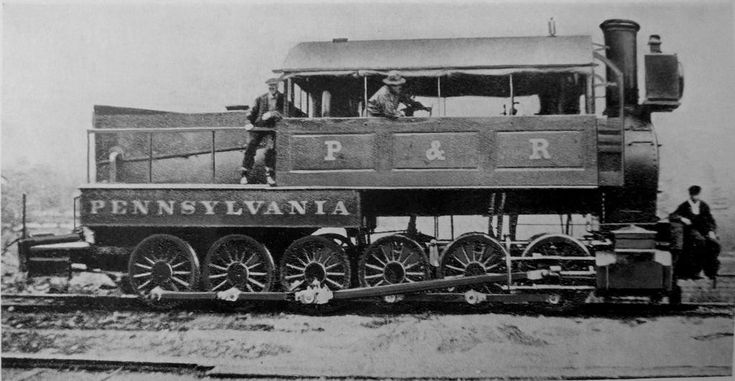
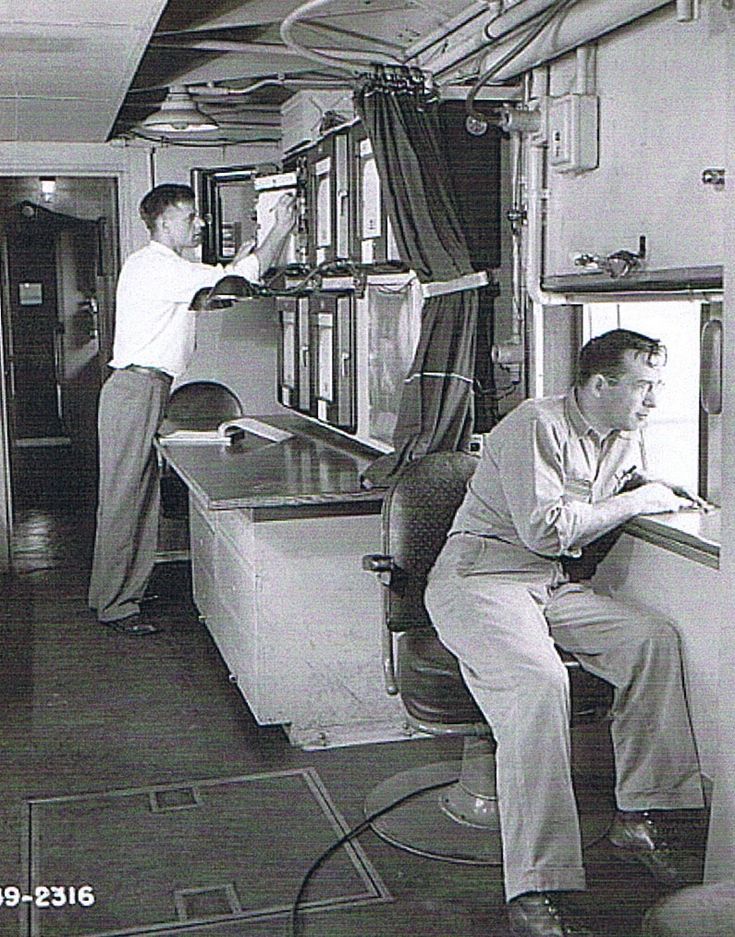
The comments on this Pinterest pic say this is possibly a Dynamometer Car taking measurements on a locomotive. One crew member is recording info, while the second appears to be observing at the window.
Pulled this pic from Pinterest. The caption on the photo implies that this steam powered car is seeing a second life as a spray-car – I assume to spray for weeds along the right-of-way. The two crew members are posing for the photo. Would you call this a Whyte 2-2-4? I wonder what it’s first purpose was?
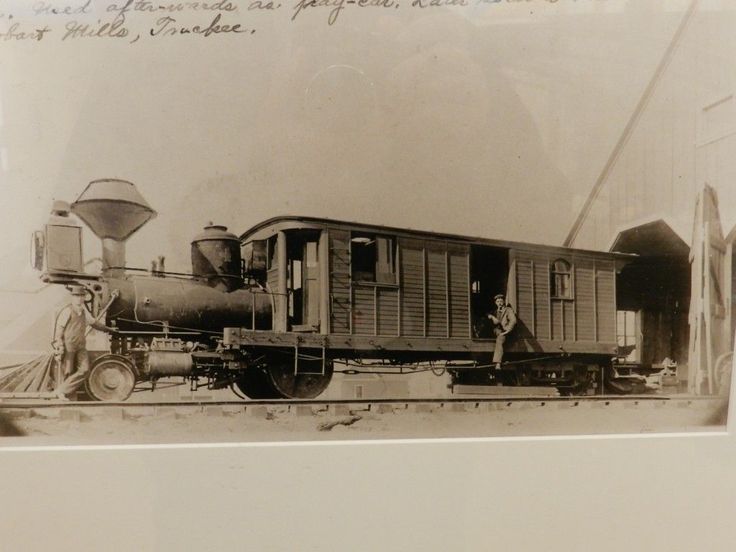
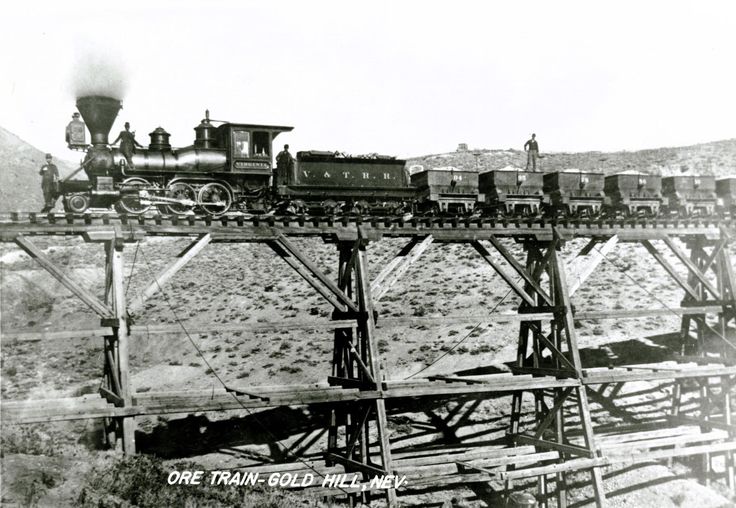
The Virginia & Truckee crew pose on the ore train while on the trestle. I assume by the name of the location, Gold Hill, that the early Mogul (2-6-0) is pulling gold ore from the mine.
“Let me check the positioning of the cars.” This is probably a small-town grain silo on the CP given the chute behind the covered hopper. I guess there’s only enough track for one hopper to be loaded! (Pinterest)
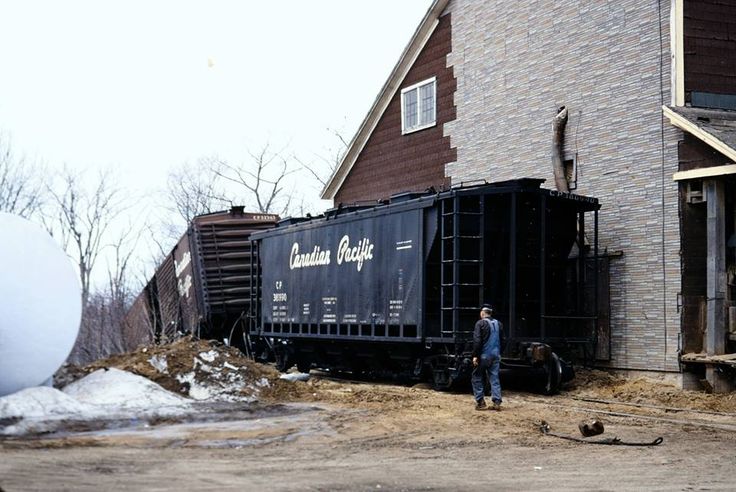
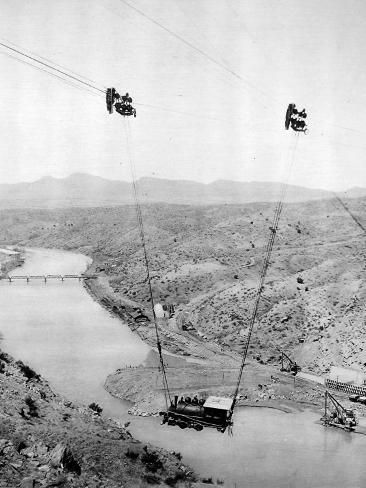
This pic caught my attention. It doesn’t show any crew members, but you cannot NOT be transfixed with the small steam loco hanging from wires on a lift over a river and up a large hillside! The location is somewhere in New Mexico. I found this on Pinterest and couldn’t find any additional info.
Viewing the crews in the RR pics has always been a fascination of mine. The visit to Rex Cochran reminded me that the activities captured in the photos were these people’s lives, and livelihood. When I review crew pics, I always end up with far more pics than I can show in one study.
Thx,
Kevin
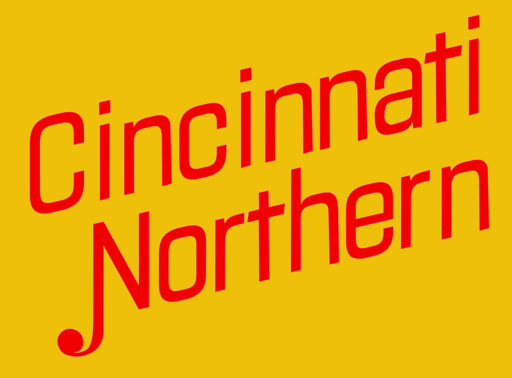
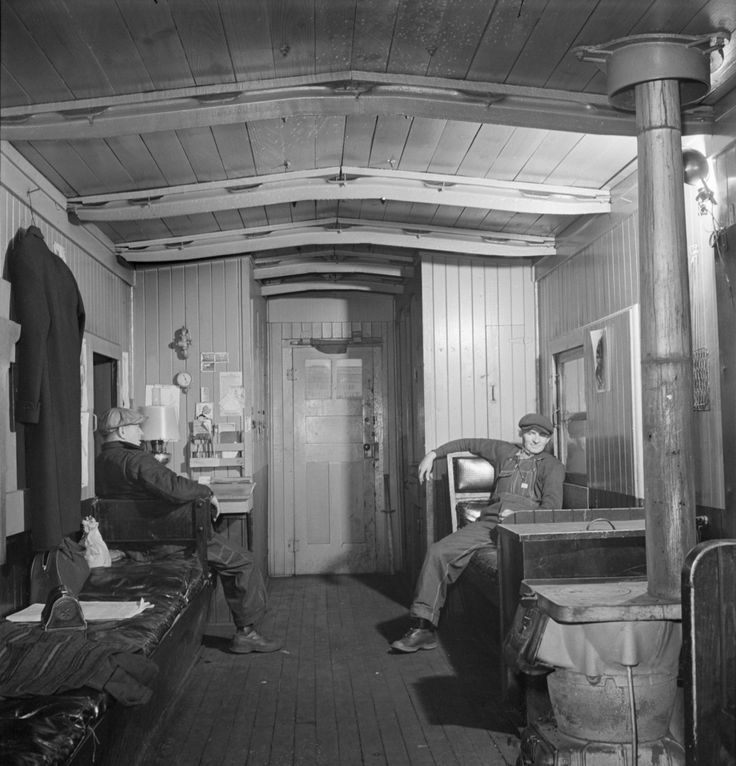
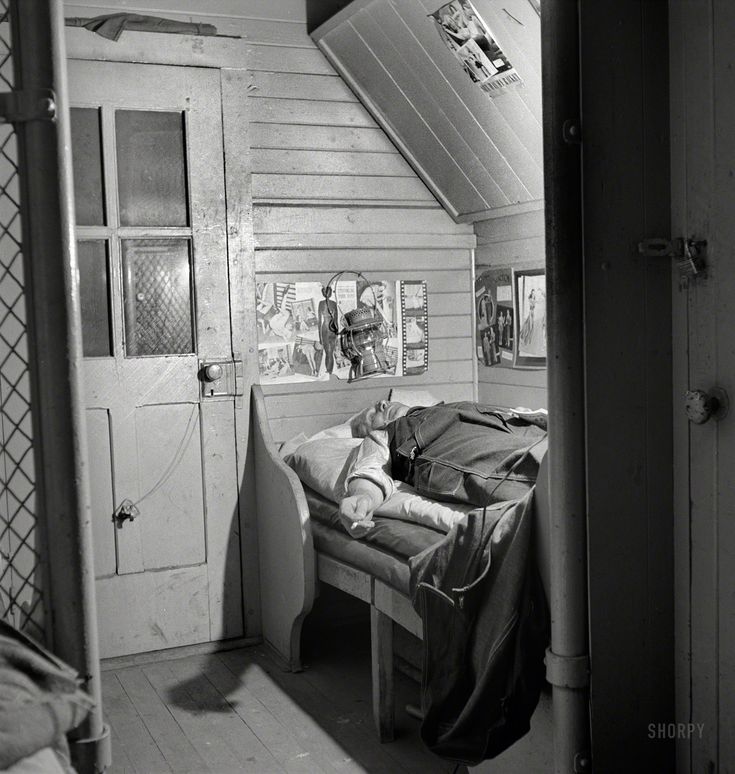
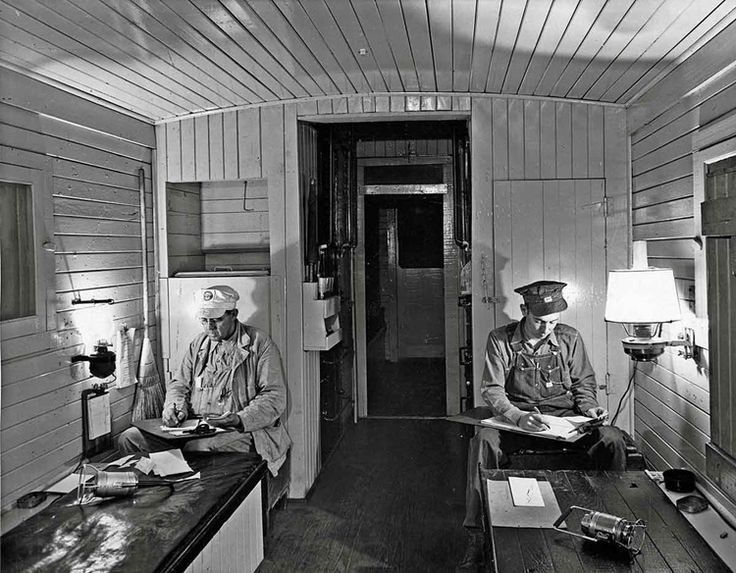
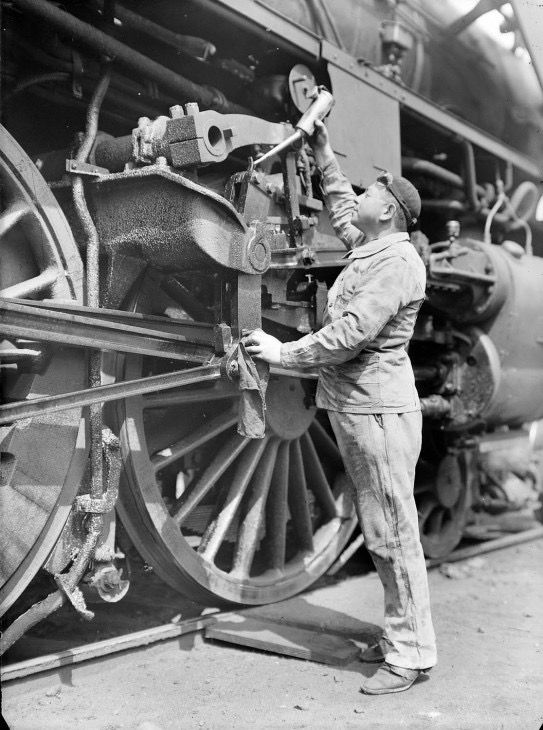
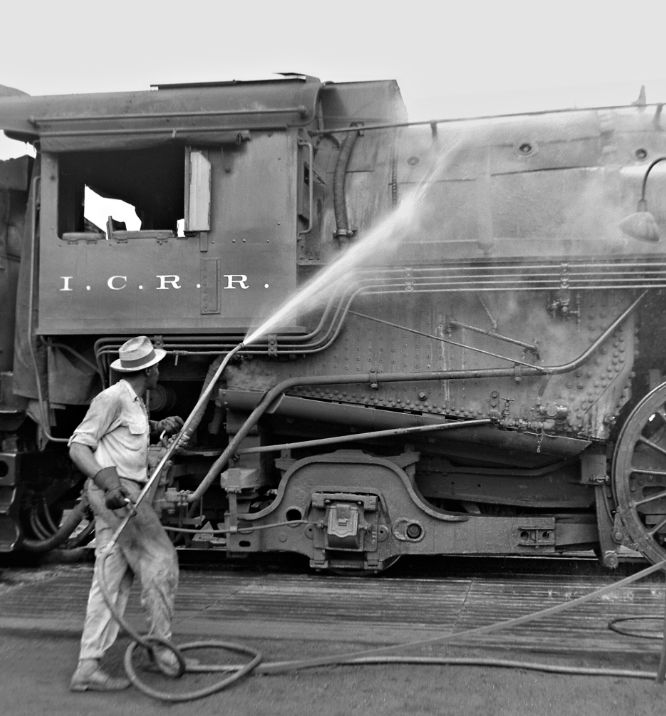
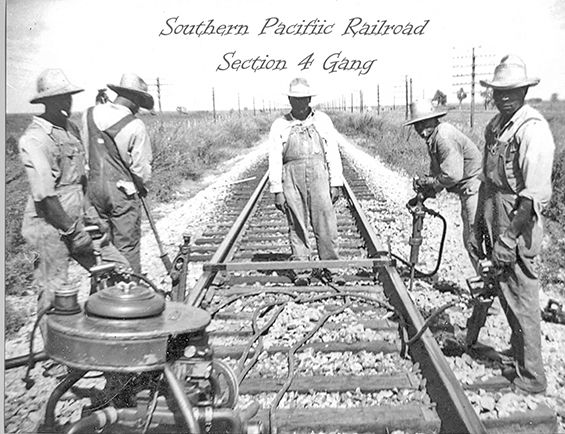
Comments